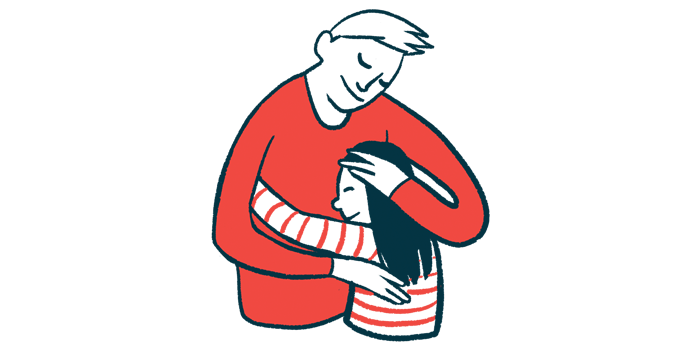Motor Symptoms Impact Patient, Caregiver Life Quality, Study Finds

Motor symptoms have a substantial negative impact on the life quality of people with AADC deficiency and their caregivers, a new study involving interviews with more than a dozen parents and other caregivers reports.
This finding highlights a need for therapies that can ease motor dysfunction in AADC deficiency, according to researchers.
“Individuals with higher levels of motor function had less severe symptoms and were better able to perform their daily, leisure and social activities,” the interviewers wrote.
More severe impairments also impacted family members caring for patients, the team found, noting that “the caregiver burden was high … with caregivers reporting that they had very little time for themselves, had sometimes needed to quit or change jobs, and had limited opportunities for leisure and social activities.”
“Treatments which improve motor function have the potential to improve other aspects of the lives of individuals with AADC deficiency and their caregivers,” the researchers wrote.
The team published their study, “Symptoms and impacts of aromatic L-amino acid decarboxylase (AADC) deficiency among individuals with different levels of motor function,” in the Orphanet Journal of Rare Diseases.
The work was funded by PTC Therapeutics, which is developing a gene therapy called PTC-AADC to treat AADC deficiency.
Scientists from Acaster Lloyd Consulting, in London, and PTC conducted interviews with 14 caregivers of 13 children, ages 1–15, with AADC deficiency (two caregivers were parents of the same child) in the U.S. and Europe. The families lived in Italy, the U.S., Spain, or Portugal.
Among the affected children, five could walk with minimal support, one could stand and step when fully supported, and one could sit without support. The remaining six children had no motor control. Five of the children used a feeding tube to eat, while the rest were able to eat by mouth but were fed by their caregivers. Four children required a ventilator.
The researchers summarized some of the themes that arose from these interviews, and looked for patterns based on the children’s motor function. Across all the interviews, the results showed that AADC has a substantial impact on affected children, often resulting in apparent frustration when patients weren’t able to do things.
“She does cry a lot. I think too because not being able to be verbal and communicate and things… I know most babies can’t really communicate anyways but I feel… I can tell, like, you know, she gets frustrated and she wants to be able to do things,” said the caregiver whose 1-year-old has no motor function.
“I think he’s sad sometimes,” said the caregiver of a two-year-old able to sit unsupported.
“I think he wants to do a lot of things… he wants to be moving around, he wants to be playing, but he can’t, like he tries to lift up his arms and tries to lift up his neck, while we’re watching TV, he tries to, like, move towards the TV and he can’t, so he gets very frustrated,” this caregiver said.
The caregiver of a 15-year-old who could stand with support also reported signs of frustration: “If he wants to do something, he wants to hold a car that is a little bit bigger in his hand and he cannot do it, he becomes irritable, he becomes nervous and he pushes it away.”
Children with AADC deficiency also appeared easily fatigued, their caregivers reported.
“At night, when he starts to get super tired and he… I don’t want to say he loses the capability of doing those things, but you can just tell that he’s tired and he needs more help,” said the caregiver of a seven-year-old who could walk.
“I notice that when I go out with her, for her it is almost like running a marathon,” said another caregiver, who cares for a 15-year-old with no motor function. “She gets very tired,” the caregiver added.
In addition to a substantial impact on the affected children, AADC also has a profound impact on caregivers — from the psychological toll of worrying about the child and feeling overburdened, to logistical challenges in trying to provide care for children while also caring for themselves. One mother noted she hadn’t been to the dentist or had time for doctor’s appointments. Many caregivers reported physical difficulties from having to physically help the child in their care.
“You don’t want to see your child have to struggle…there’s been times where I have been super depressed,” said the caregiver of a seven-year-old.
Being a caregiver is “a big commitment and it’s a lot and you do need to sacrifice a lot. Free time, socialisation, going out and doing things,” another said.
The researchers noted that it was generally easier for caregivers of children with more motor function to participate in social and leisure activities, though these parents still needed a lot of planning in advance for such activities.
“This study provides novel insights into the experience of individuals with AADC deficiency and their caregivers across different health states,” the team concluded.
While noting that other studies have assessed these health states, giving them utility weights, the team said it can be “difficult to interpret what [such information] means in real-life terms for individuals and their caregivers.”
“This study provides a narrative around what it means to be an individual … with AADC deficiency or a caregiver. … These findings can help inform … the burden of disease in AADC deficiency and the importance of new treatments which improve motor function,” they concluded.








